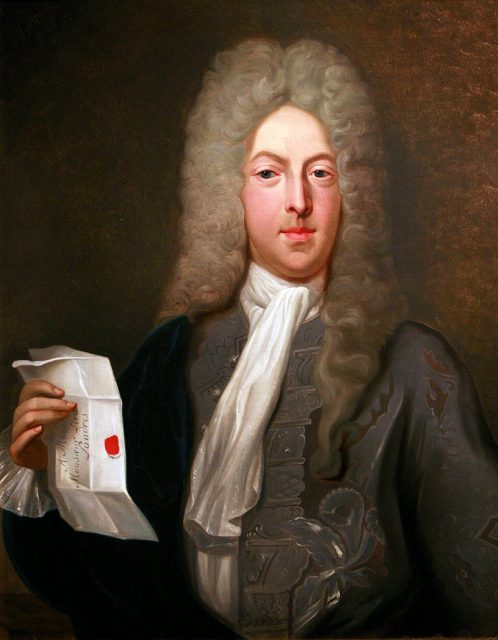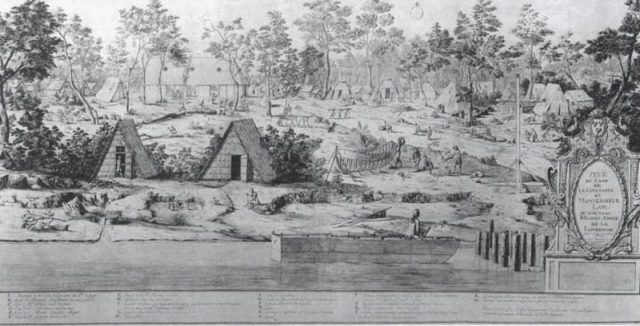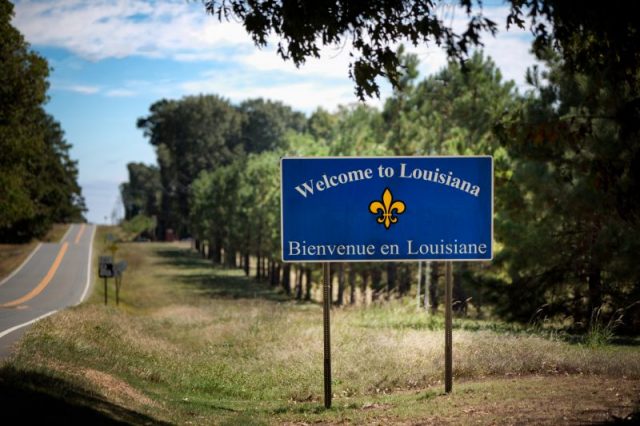In 1534, Jacques Cartier set sail to explore the Eastern coast of North America on behalf of France. Hoping to discover a passageway to China, he actually found Canada.
The French set up camp there and over the years they expanded their territory. New France stretched all the way down the Mississippi River, covering 3,000 miles. It was even larger than France itself.
Robert de la Salle was the French explorer who, in 1643, claimed the territory we now call Louisiana and named it in honor of King Louis XIV.
But times were tough back home. The Franco-Spanish war from 1635 to 1659–and the Fronde civil war which had kicked off in 1635, right in the middle of France’s fight for territory with the Spanish Habsburgs–had depleted the royal treasury and made life hard for the people.

At first, French settlers were lured to New France with hopes of an easier life in a lush land supposedly filled with gold and silver. People went gladly, but what they actually found was that life wasn’t that easy, and gold and silver weren’t lying about waiting to be pocketed.
With France mired in economic crisis, unable to properly make profit out of the new territory, the government all but forgot about its settlers.

Meanwhile, back in France, people were struggling to provide for their families, crime was at an all-time high, and the prisoner count was rising daily. The government had to do something to overcome this economic slump and appease its restless populace.
This is when John Law stepped in. Law, a Scottish-born financier with an interest in gambling (especially with other people’s money), threw together an idea and sweet-talked his way into setting up a paper money bank in France as well as taking control of the colonies.
6 Mysterious Islands From Around The World
The attraction of moving to the new land for many of the French was gone, but there was still an urgent need for a workforce in order to expand the colony. This was the way to keep the British, who were always wanting to gain control over the French land, at bay.
Placing more trust in him, the regent, the Duke of Orleans allowed John to ‘invite’ people to Louisiana in 1719.

At first, Law offered those who would take him up on it a one-way ticket out of jail, but if and only if they agreed to get married. So, in 1719, 184 lady prisoners chose grooms from among the riffraff of male prisoners.
In no time, Law had them married off, shackled together, and on the first ship to the New World. Those who went willingly were offered land. Law’s migrants arrived at what is now Biloxi. Many started out not only with no land but also no shelter or food. Within the newly over-crowded area, there were no “jobs” either.
Then Law got more greedy. Louisiana needed to grow faster.

He started to round up other citizens of France from the hospitals and asylums, pairing them with partners of equal standing in society, and sending them on to the colony. This influx of fresh faces was great, but when they showed up in town offering less than ideal conditions, many died and the rest went back to their criminal activity to survive the harsh colonial life. The original immigrants decided to relocate to a safer area, forming New Orleans.
The colonist-criminals continued to pour in and upset the balance. According to the diaries of Louisianan settlers, the whole colony was dangerous, but New Orleans was documented as one of the wildest and most dangerous places to live at that time.

The people began to protest to the French government. Deciding that the people were rightly upset, it was declared illegal to deport anyone else to the New France territory.
In 1718, the colony consisted of 700 Europeans, but by the last ship, the population had grown an additional 800. In total, Law transported three ships of people to his colony before it became unlawful to do so in 1722. The last ship arrived in December 1721.
It was about this time that the government realized that Law’s plan was backfiring and that the French economy was collapsing. Law went bankrupt and fled to Brussels. Later he moved to Venice, where he spent the remainder of his days gambling.
